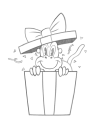Give a gift
Give a gift card for art students to use on anything in the Proko store.
Or gift this course:

About instructor
Founder of Proko, artist and teacher of drawing, painting, and anatomy. I try to make my lessons fun and ultra packed with information.













Assignment
Your assignment for this week is to do some quick sketches of models in various poses. Make sure to focus on the motion and form of the abs. Sometimes to show the forms, it might make sense to indicate some tone. But don't go overboard. The assignment is not to spend hours rendering a single pose. It's to do a lot of quick studies. Sometimes an indication of a core shadow with the right shape and edge will be enough to indicate the form. If you're new to shading, skip it for this exercise since it will be a distraction.